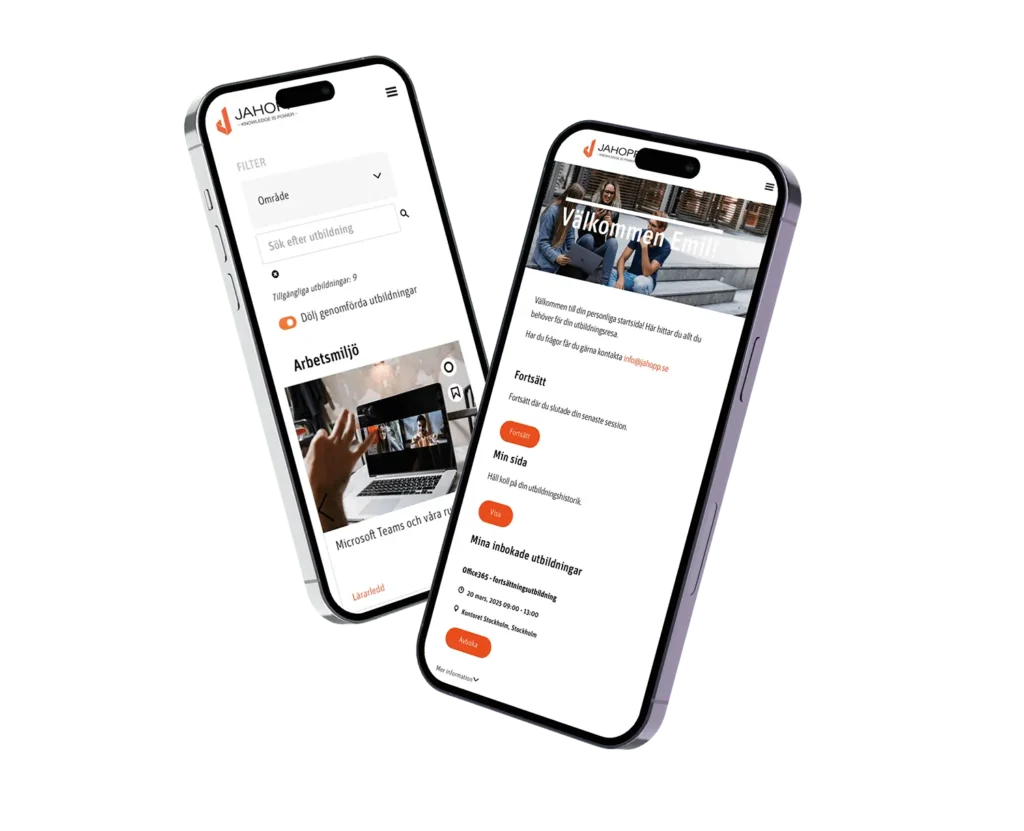Modulbaserad prissättning
Vi på Jahopp förstår att varje företag har unika behov när det kommer till utbildning och därför tillämpar vi modulbaserad prissättning. Vi har tre anpassningsbara paket för att passa olika organisationer: Spark, Amplify och Prime.
Spark
Det överkomliga startpaketet som inkluderar de moduler du behöver för att komma igång.
Digitalt lärande
Admin Dashboard
Statistik
Författarverktyg
Från €300 / månad
Amplify
Lägg till 2 moduler
+2
Från €600 / månad
Hitta rätt lösning med Jahopps flexibla prispaket
Spark: Detta är vårt överkomliga startpaket som ger dig allt du behöver för att komma igång. Inkluderat i Spark-paketet hittar du funktioner som digitalt lärande, Admin Dashboard för enkel hantering, detaljerad statistik för uppföljning, och ett kraftfullt författarverktyg. Allt detta till ett pris som börjar från €300 per månad.
Amplify: Om du vill ta din utbildning till nästa nivå, kan du uppgradera till Amplify. Här får du allt som ingår i Spark-paketet, plus möjligheten att lägga till ytterligare 2 moduler enligt dina specifika behov. Amplify ger dig flexibiliteten att skräddarsy din upplevelse och utöka funktionaliteten. Priset börjar från €600 per månad.
Prime: För de organisationer som söker obegränsad tillgång och fullständig frihet, erbjuder vi Prime. Med Prime får du åtkomst till alla våra moduler, utan begränsningar. Det innebär att du kan utforma din utbildningsplattform precis som du vill ha den. Kontakta oss för att få en skräddarsydd offert för Prime.

Vad innebär modulär prissättning?
Det unika med vår prismodell för Jahopp LMS är att du betalar per modul som du väljer, inte per användare. Detta ger dig förutsägbarhet och undviker överraskande kostnader. Vi tror på att erbjuda rätt verktyg till rätt pris, oavsett storlek på din organisation.
För att utforska och lära dig mer om våra olika moduler och hur de kan anpassas för att passa dina behov, besök vår webbplats via länken nedan.